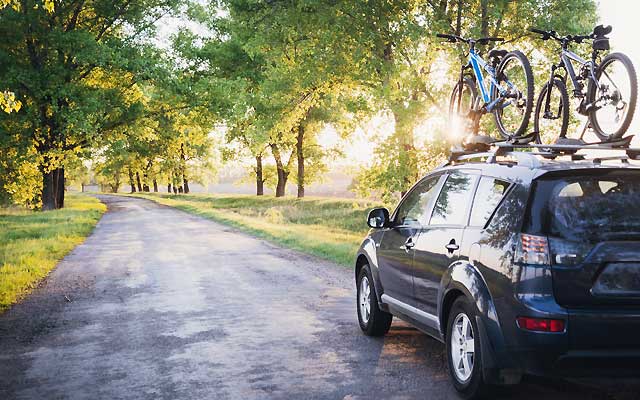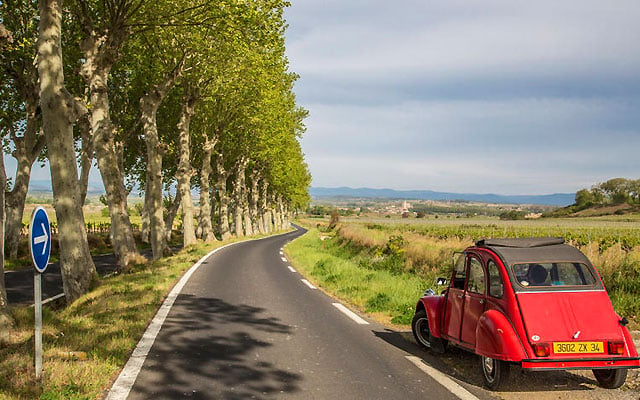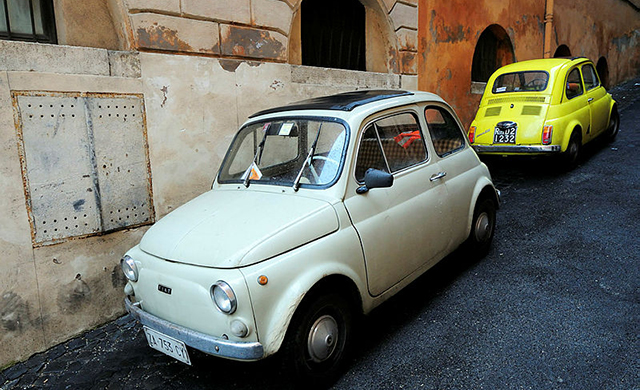Driving in Europe doesn't just mean driving on the right. There are lots of things about driving on the Continent that are different to driving at home.
Here's our top tips to make the most of driving through France, Spain, Germany and other countries in Europe.
Driving in the EU after BrexitThe UK stopped being a member of the EU on 31 January 2020. However, until the end of 2020 the previous rules on travel for the UK and the EU continue to apply. New rules on travel in the EU may take effect on 1 January 2021, including the documents you'll need to carry when driving in Europe. |

1. Watch out for French speed limits
Speed limits in France can be confusing, as they change according to the weather, your vehicle and the type of road you’re on. For instance, the speed limit on a toll motorway in dry weather is 80mph, but when wet this reduces to 68mph. Make sure you're clear on the rules.
2. Top up before you come home
Fuel’s often much cheaper on the Continent, so fill up on your way home.
3. Parking in Spain can be strange
In Spain, on some one-way streets, vehicles must be parked on the side of the road where houses bear odd numbers on odd days of the month, and on the side of even numbers on even days. Brush up on the parking rules for wherever you're heading to avoid a fine.
4. Beware of breakdowns
The main causes of breakdowns in Europe? The same as those in the UK... typically flat batteries, lost keys, damaged tyres and wheels, and fuel problems (petrol in the diesel tank and vice versa). You can cut your chance of breaking down abroad with some 'FLOWER power' (a few simple checks you can do before you leave home).
5. Look out for long tunnels
Road tunnels can be surprisingly long in Europe and as a result, even experienced drivers can find them a bit strange and unsettling.
The longest in Norway is about 15 miles long – whereas the longest in the UK – the Queensway near Liverpool – is just 2.13 miles. As you enter a tunnel, remember sunglasses off, lights on. Keep your distance, listen to local traffic radio, and look out for phones and emergency exits.
Learn more about driving in tunnels in Europe.
6. Check parking in tourist areas
No-one wants to collect traffic or parking fines abroad, so it helps to know the rules. In many historical centres and major towns in Europe, traffic's restricted from entering areas known as ‘Zona a Traffico Limitato’ or ZTLs. So if you see that on a sign, don't enter. Only residents can enter and if you keep going you can expect a fine in the post.
More on urban traffic regulations in Europe.
More on driving offences abroad.

7. Remember to drive right
Driving on the right’s a mental adjustment, but it's easy enough once you get the hang of it. Remember:
- Negotiate roundabouts in an anti-clockwise direction
- Oncoming traffic is seen coming from the left
- Left-turning traffic crosses oncoming traffic
- The far right-hand lane is the slow lane; the inner left-hand lane is the fast lane
- Traffic signs are usually on the right-hand side of the road
- Put headlight beam converters on your lights, to avoid dazzling oncoming traffic at night
While you're getting used to driving on the right-hand side, take extra care, stop for plenty of breaks and have an alert passenger with you. That way you wouldn't be the only person worried about lapsing into 'left hand-side autopilot' at roundabouts, junctions and leaving a petrol station
Find out more:
8. Prepare to pay for toll roads
There are around 40 toll roads in Spain, and around 90 in France – so take plenty of coins to the Continent. Consider buying the French Liber-t automatic toll payment tag before you go, to skip the queues.
9. Switch off speeding detection in France
You have to switch off speed-camera detecting devices when driving in France on all your navigation services. Whether that's in-car, co-pilot on your phone/tablet, or your sat nav.
10. Roundabouts are anti-clockwise
There are around 32,000 roundabouts in France (compared to around 25,000 in the UK) and tackling them from the other side of the road can take some getting used to. It used to be the case on many in France, that drivers already on the roundabout had to give way to those entering it from the right. Thankfully, cars already driving round the roundabout now usually have right of way. Just remember that traffic flows anti-clockwise.
11. Don't eat and drive
Eating and drinking while driving is prohibited in Cyprus and there’s a fine for non-compliance.
12. Own the autobahns
Head to France for a break from our endless traffic jams. Outside of big cities and the major autoroutes (motorways), the roads are much quieter and driving’s much more pleasurable than in the UK.

13. Unplug your headphones
In France, drivers and riders mustn’t use headphones and headsets.
14. Avoid beeping in Austria
Using your horn is generally prohibited in Vienna and in the vicinity of Austrian hospitals.
15. Keep the right kit
You should carry a breathalyser when driving in France.
Find out what should be in your European car kit.
16. Bear in mind bikes in Portugal
In Portugal, it’s illegal to carry bicycles on the back of a car.
17. Keep up appearances in Eastern Europe
Driving to Belarus, Romania, Russia? First of all, wow – that's impressive. But secondly, remember to budget for a car wash or two along the way. Driving a dirty car in these countries could land you in some seriously hot water.
| Driving penalties in Europe can be severe with large on-the-spot fines, the risk of having your car impounded or worse. Traffic police on the continent aren’t known for their leniency, so even minor breaches can be punished. Save yourself a nasty fine by checking out the rules and equipment requirements before you leave. |
